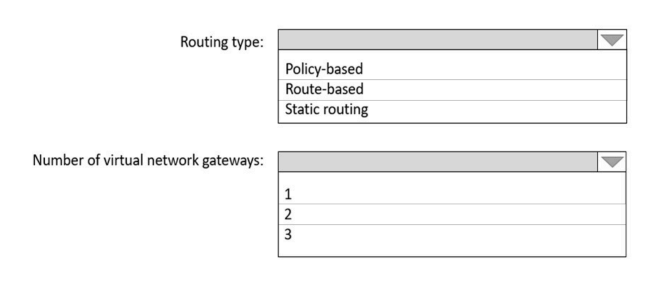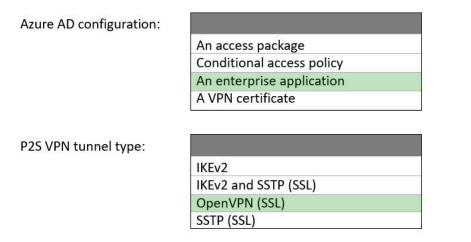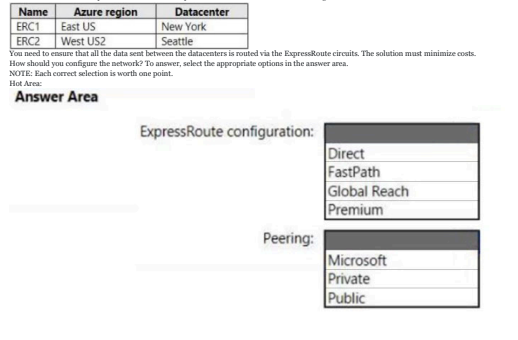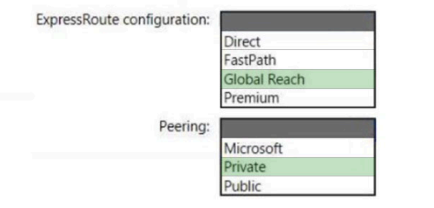Your company has offices in New York and Amsterdam. The company has an Azure subscription. Both offices connect to Azure by using a Site-to-Site VPN connection.
The office in Amsterdam uses resources in the North Europe Azure region. The office in New York uses resources in the East US Azure region.
You need to implement ExpressRoute circuits to connect each office to the nearest Azure region. Once the ExpressRoute circuits are connected, the on-premises computers in the Amsterdam office must be able to
connect to the on-premises servers in the New York office by using the ExpressRoute circuits.
Which ExpressRoute option should you use?
A. ExpressRoute FastPath
B. ExpressRoute Global Reach
C. ExpressRoute Direct
D. ExpressRoute Local
Answer:B
✅ Explanation:
-Your scenario involves:
-Two on-premises offices: Amsterdam and New York.
-Each office connects to its nearest Azure region (North Europe for Amsterdam, East US for New York).
-You plan to set up ExpressRoute circuits for both locations.
-Your requirement: On-premises computers in Amsterdam must be able to connect to on-premises servers in New York via ExpressRoute, not just Azure.
💡 Why ExpressRoute Global Reach is the correct option:
ExpressRoute Global Reach allows you to connect two on-premises sites via Azure’s backbone network, using your existing ExpressRoute circuits.
-This means your Amsterdam and New York offices can communicate directly through Microsoft’s global private network, even though they are connected to different Azure regions.
-It's designed specifically for interconnecting multiple on-premises networks across geographies.






